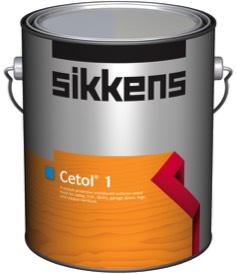Refreshing The Finish On My Outdoor Pieces
I am often asked about maintaining my outdoor pieces. People want to know if the process is complicated? They also want to know what will happen if they decide not to maintain the finish?
There are a number of choices that I make when designing an outdoor piece. Cast concrete usually makes an appearance to help with the problems associated with wood contacting the ground. The hardware is always stainless steel to remove the possibility of rust. The wood is chosen to for its ability to survive outdoors without finish. The wood will turn gray if the finish is not maintained, but it will resist rotting for many years.
I have chosen to use Cetol 1, color is Natural, by SIKKENS for my outdoor pieces for the following reasons
Cetol 1 is the first part of a 2 part system. The second part of the system is not appropriate for furniture so please do not feel like you are missing out on anything. Cetol 1 has the fantastic ability to wear away without cracking or peeling. As a result there is no sanding involved in refreshing the finish. I buy it from World Paint Supply Cetol 1 071 Natural Quart
- ease of maintenance
- never crack or peel
- easily available online
- very effective in all climates
Cetol 1 is the first part of a 2 part system. The second part of the system is not appropriate for furniture so please do not feel like you are missing out on anything. Cetol 1 has the fantastic ability to wear away without cracking or peeling. As a result there is no sanding involved in refreshing the finish. I buy it from World Paint Supply Cetol 1 071 Natural Quart
The process begins by cleaning the piece with water. A hose is probably not the right tool. A rag or a sponge and a bucket of water is the way to go. Once the piece is clean and dry it is time to get to work. I always wear gloves when applying finish, a good precaution. Open the can of Cetol 1 and give it a stir. There are solids in there that need to be mixed throughout. The goal is to moisten the entire surface of the piece. We do not want the finish to sag, drip or run. I use a clean cloth rag to apply the finish. I buy them from the local hardware store by the pound. They are remnants from t-shirt factories. A towel or anything with a thick nap would not result in the smooth even coat that we desire. An alternative would be a 3" wide foam brush. If you feel like you are putting the finish on too thick, grab a clean rag and wipe it off. I would rather see a series of thin coats, applied one per day, than a single thick coat with drips.
Make sure to put up a wet paint sign and dispose of the brush and/or rags in a safe manner. What is the safe way? Unfurl the rag and lay it out to dry. Make sure to let the foam brush dry out before putting it in the garbage. Once dry they are harmless. If crumpled up and confined in a container in just the wrong way there is the remote possibility of spontaneous combustion. The risk is greatly reduced in this era of low VOC finishes, like the Cetol 1. Better safe and let them dry out.
Make sure to put up a wet paint sign and dispose of the brush and/or rags in a safe manner. What is the safe way? Unfurl the rag and lay it out to dry. Make sure to let the foam brush dry out before putting it in the garbage. Once dry they are harmless. If crumpled up and confined in a container in just the wrong way there is the remote possibility of spontaneous combustion. The risk is greatly reduced in this era of low VOC finishes, like the Cetol 1. Better safe and let them dry out.
